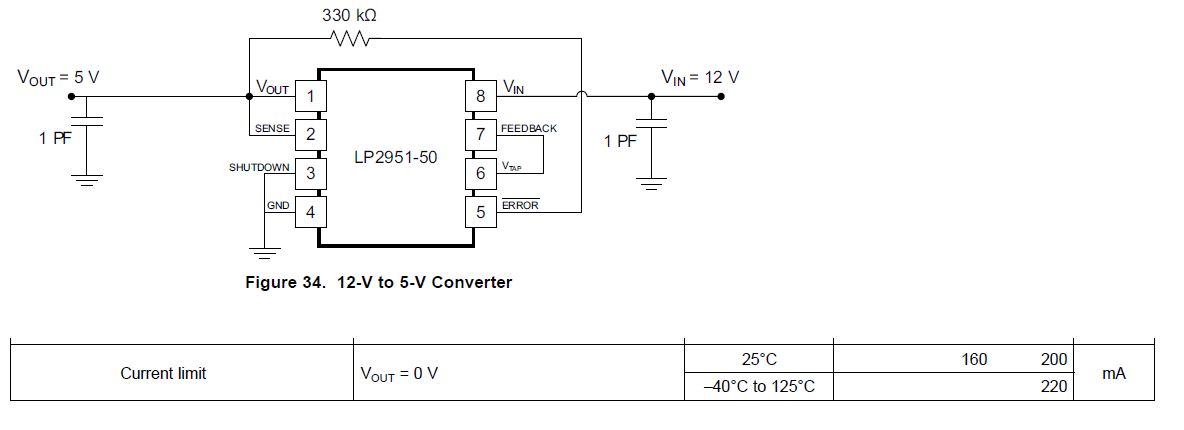Other Parts Discussed in Thread: LP2951
Hi,
I would like to ask you about the current and thermal limiting features of the LP2951-Q1 device.
(question 1)
In the circuit shown below, if VOUT is short-circuited with GND, an overcurrent will occur, but it seems that the current is limited at 160mA (typ).
In this case, is constant current controlled at 160mA?
Or will VIN and VOUT be disconnected?
(Question 2)
In the above, when the constant current is controlled at 160mA, the device seems to heat up and reach the thermal limit.
In this case, what is the thermal limit set for this device?
In the thread below, the measured value of EVM seems to be 184 °C, but I would like to know the setting value, not the measured value of this device.
(Question 3)
Is it possible to detect an overcurrent and stop the operation of the device itself?
(Question 4)
I think that each limit works when VOUT is short-circuited to GND and becomes overcurrent. In this case, is there a possibility that this device will smoke and ignite?
Best regards,



